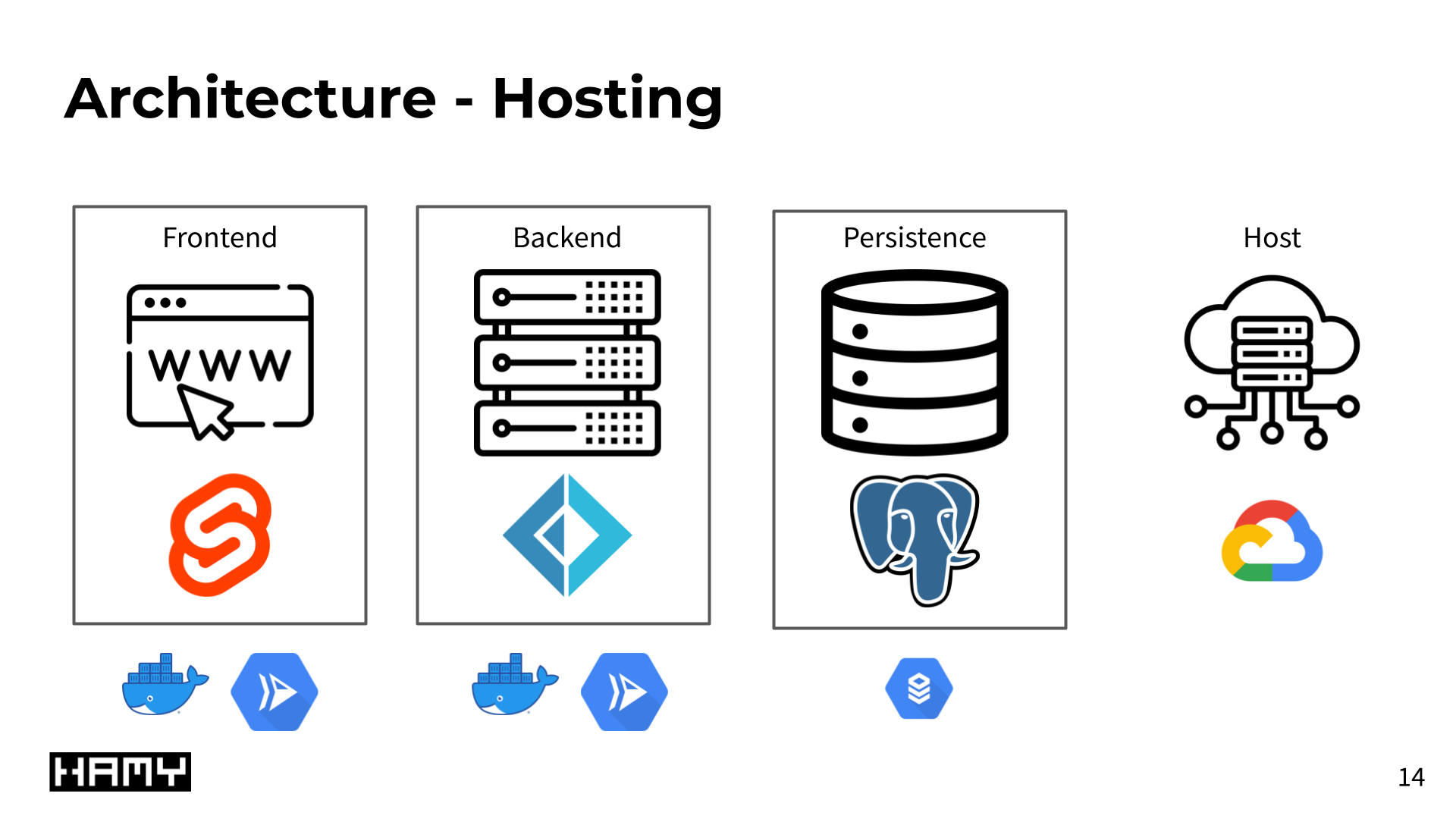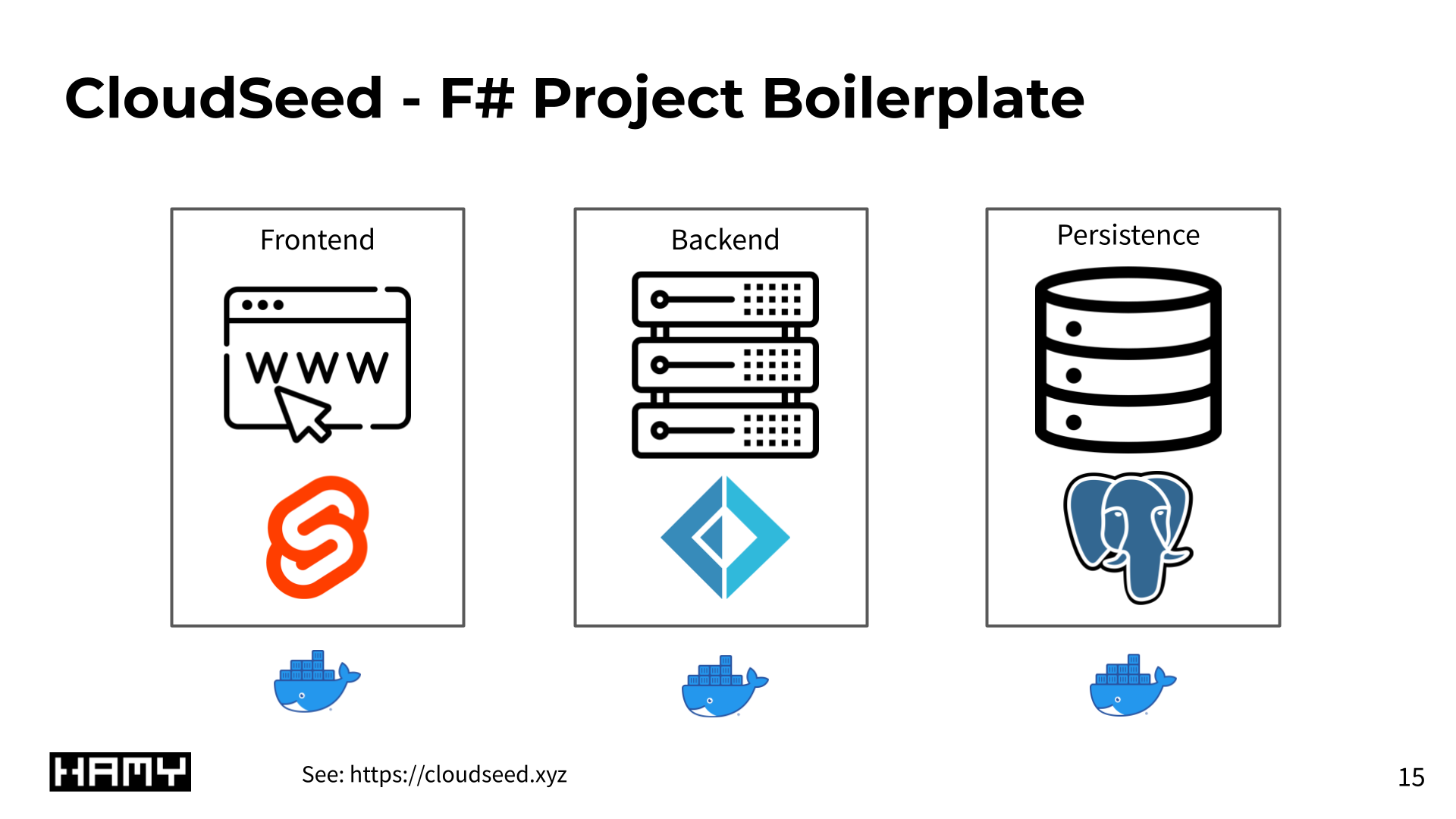Essay - Published: 2022.11.02 | fsharp | projects | smash-the-button | sveltekit |
DISCLOSURE: If you buy through affiliate links, I may earn a small commission. (disclosures)
In this post we'll dive into building a full-stack web app using SvelteKit and F#, using SMASH_THE_BUTTON as an example.
SMASH_THE_BUTTON is a clicker website that allows you to increment a counter.
The premise is:
My goals for the site were to:
I learn best via doing, so I built this site to test many different parts of the language and paradigm.
Before building / designing any kind of software I think it's useful to first understand what we're trying to accomplish - this is usually best done from the users's standpoint as most software aims to solve some sort of user problem. For this we'll use a rough approximation of the JobsToBeDone framework.
With a basic understanding of the customers and what they're trying to accomplish, we can move forward to the Workflows we can build to support them.
For this we really only need two workflows:
Most software projects have very similar core requirements and thus typically have similar core components:

For this project, I decided to use a few familiar tools along with F# to speed things up:
For hosting I again went with Google Cloud, using CloudSQL to get a cheap, managed Postgres instance and Cloud Run to host and serve my Frontend and Backend Docker containers.

If you've been following along for awhile, you'll probably recognize this architecture - it's a similar architecture to how I build and run most projects. I packaged these technologies together into a fully dockerized project boilerplate called CloudSeed to make it faster to build production-ready apps. Get the full CloudSeed boilerplate.
I've been following r/fsharp for awhile and there's a lot of questions about technologies to use to build a decent, real-world F# web server. For this project I went with:
F# and Functional Programming excels at being super simple by removing any and all "magic". I wanted my tech stack to continue with that philosophy so everything here is battle-tested and with the smallest abstractions possible while still remaining ergonomic.
For more info: Build a simple F# web API with Giraffe
From the Workflows and Architecture, it's pretty easy to see how all this goes together. That said, there were a few areas I found interesting scalability wise that I think are worth doing a shallow dive into.
When we consider the Workflows we're building, there's two obvious bottlenecks:
While most projects never really reach a scale where any of these optimizations are necessary, I still think they're useful thought exercises to ensure whatever design you come up with could reasonably scale if it became an issue in the future. Moreover since my primary goals for building this were to learn F# and Functional Programming - I took this as a challenge to discover how I might solve these common problems functionally.
For the write bottlenecks, we can use some common patterns to deal with load:
n / batchSize
Batching clicks in SvelteKit is pretty simple. Basically we have:
Button code:
<button
on:click={() => {
localCount += 1
unsavedLocalCount += 1}}
type="button">
SMASH
</button>
Script code enabling interval click sends:
let remoteCount = 0
let localCount = 0
let unsavedLocalCount = 0
let saveButtonPushes = () => {
if(unsavedLocalCount === 0) {
return
}
sendButtonPushesCommandAsync({
hits: unsavedLocalCount
})
unsavedLocalCount = 0
}
let saveButtonPushesInterval = setInterval(
saveButtonPushes,
2000
)
The frontend code tries to prevent any one client from sending too many writes but there are still cases where we could end up with a flood of traffic on the backend - like there are a lot of clients at the same time or someone decides to hit the APIs directly. For this, I decided to try out F#'s built-in agent system to build a simple in-memory queue.
BatchWriter:
module BatchWriter =
let createBatchWriter<'TMessage> (batchSize : int) (writeFnAsync : (list<'TMessage>) -> Async<unit>) =
let agent = MailboxProcessor.Start(fun inbox ->
let rec loop (messageList : list<'TMessage>) =
async {
let! message = inbox.Receive()
let newMessageList = message::messageList
match newMessageList with
| newMessageList when (newMessageList.Length >= batchSize
|| inbox.CurrentQueueLength = 0) ->
do! writeFnAsync newMessageList
return! loop []
| _ -> return! loop newMessageList
}
loop [])
fun (message : 'TMessage) ->
agent.Post message
This is basically a batchWriter "factory" that utilizes a closure to allow you to create a new queue each time.
It can be used like this:
let myBatchWriter = createBatchWriter batchSize myBatcherFunction
Note that this queue is in-memory so if something bad happens we'll lose messages. But that doesn't really matter for this project and should be able to easily handle a queue of >50k messages easily.
The final bottlenecks to talk about are on the read side. One important thing for this project is for users to know that the counter is actually updating. We do a lot of this work locally but we still need to ask the server periodically about what the global count is so we can give a better clicking experience.
For reads I also took a two-pronged approach:
One of the major ways to increase efficiency in a system is to do less work. Since all work in our system originates from a client, we can tell the client to do less.
I like the polling approach because it's simple and it's very configurable if we actually start having scale problems.
On SvelteKit frontend:
let remoteCount = 0
let localCount = 0
let unsavedLocalCount = 0
$: totalCount = remoteCount + localCount
let fetchRemotePushes = () => {
getRemotePushesQueryAsync()
.then(totalRemotePushes => {
remoteCount = totalRemotePushes.payload ?? 0
})
}
onMount(async () => fetchRemotePushes())
let fetchTotalPushesInterval = setInterval(
fetchRemotePushes,
5000
)
Of course we still have the problem where if we get a ton of concurrent clients / people hit our backend APIs directly we could overload our IO bottlenecks. The common solution to this is caching.
I took this as an opportunity to try my hand at writing a simple cache myself. It's got a lot of shortcomings:
So probably would recommend most people use the official FSharp.Data.Runtime.Caching implementation.
SimpleTimedMemoryCache
module SimpleTimedMemoryCache =
type TimeCachedItem<'Item> = {
Item: 'Item
ExpiryTimeEpochMs: int64 }
let createTimeBasedCacheAsync<'TCache> (timeWindowMs : int64) (totalItemCapacity : int): (int64 -> string -> Async<'TCache> -> Async<'TCache>) =
let cachedItemLookup = new ConcurrentDictionary<string, TimeCachedItem<'TCache>>()
let trashCollect (cachedItemLookup : ConcurrentDictionary<string, TimeCachedItem<'TCache>>) (countToRemove : int) : unit =
match cachedItemLookup.Count with
| count when count > totalItemCapacity ->
cachedItemLookup.Keys
|> Seq.truncate countToRemove
|> Seq.toList
|> Seq.iter (fun k ->
cachedItemLookup.TryRemove(k) |> ignore)
|> ignore
| _ -> ()
let fetchFromCacheOrFetcherAsync (currentTimeMs : int64) cacheId (fetcherFnAsync : Async<'TCache>) : Async<'TCache> =
async {
let existingCachedItem =
match cachedItemLookup.TryGetValue(cacheId) with
| true, item ->
match item with
| i when item.ExpiryTimeEpochMs > currentTimeMs ->
Some item
| _ -> None
| _ -> None
match existingCachedItem with
| None ->
let! newItem = fetcherFnAsync
let newCachedItem = {
Item = newItem
ExpiryTimeEpochMs = currentTimeMs + timeWindowMs
}
cachedItemLookup[cacheId] <- newCachedItem
trashCollect cachedItemLookup 2
return newItem
| Some(cachedItem) ->
return cachedItem.Item}
fun (currentTimeMs : int64) cacheId (fetcherFnAsync : Async<'TCache>) ->
async {
return! fetchFromCacheOrFetcherAsync currentTimeMs cacheId fetcherFnAsync
}
let createTimeBasedMemoAsync<'TMemo> (timeWindowMs : int64) =
let placeholderCacheKey = "_memo_key"
let cacheFunction = createTimeBasedCacheAsync<'TMemo> timeWindowMs 1
fun (currentTimeMs : int64) (fetcherFnAsync : Async<'TMemo>) ->
cacheFunction currentTimeMs placeholderCacheKey fetcherFnAsync
Theoretically this limits IO for reads to 1 every 2 seconds per app instance. In practice, we actually end up with some thundering herd possibilities due to concurrency race conditions when multiple requests hit an evicted cache item.
But still does the job.
That's it - my whirlwind tour of how I built a fullstack website with SvelteKit and F#.
The best way to support my work is to like / comment / share for the algorithm and subscribe for future updates.